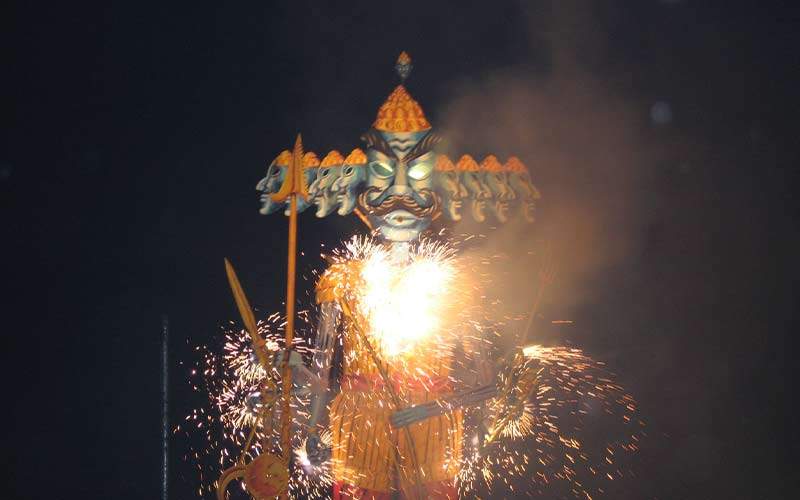Dussehra, also called Vijayadashami, is the tenth day of the annual Navratri Festival. The latter is regarded as the period when the Mother Goddess (Devi) visits the human world for ten days. Therefore, a different form of Her is celebrated on each of the ten days. Here is the information on why is Dussehra celebrated, its significance, and timings.
Significance of Dussehra:
The core significance of Vijayadashami is the triumph of good (Dharma) over evil (Adharma). Spiritually, it relates to the desire in each person to abolish all bad thoughts, and practices, within them and replaces it with good intentions, principles, and mode of conduct.
Why is Dussehra celebrated?
In Hindu belief, it stems to various episodes in Hindu mythology. One is Durga Maa’s victory over the bull demon Mahishsura. Another is the victory of the Pandavas over the Kauravas. The biggest celebration in North India is the killing of the demon king Ravana in the hands of Rama, the seventh avatar of Lord Vishnu. The main pooja timings to be followed for these celebrations are:
Dussehra 2019 timings
The Navratri celebrations began on 29 September.
Dashami Tithi begins at 12:30 pm on October 7 and ends at 2:50 pm on October 8
Aparahna Puja Time = 1:17 pm to 3:36 pm (2 Hours 15 Minutes) on October 8
Vijay Muhurat = 2:04 pm to 2:50 pm (46 minutes) on October 8
Team Yo! Vizag wishes all its readers, and their loved ones, a very Happy Dusshera!










Discussion about this post